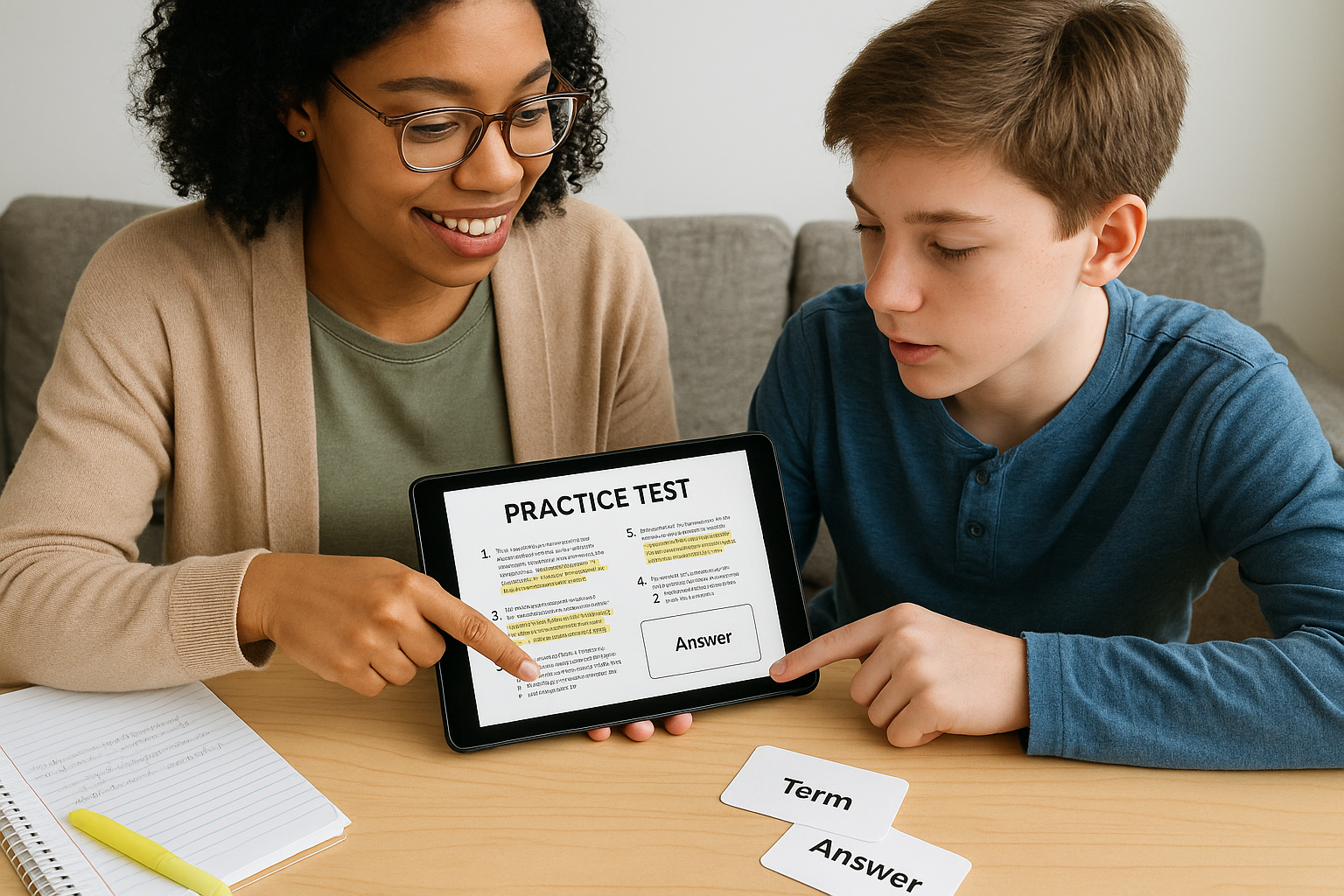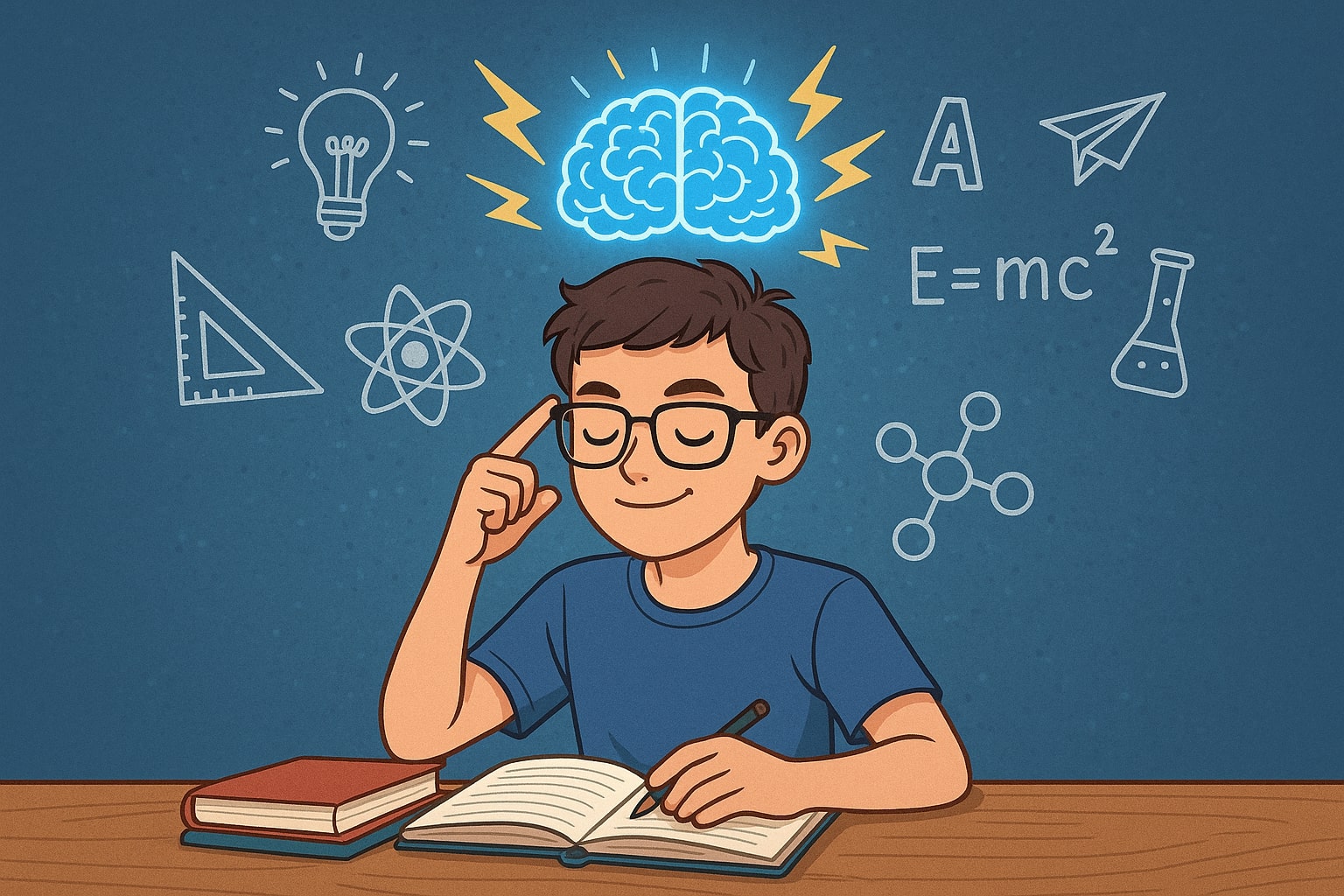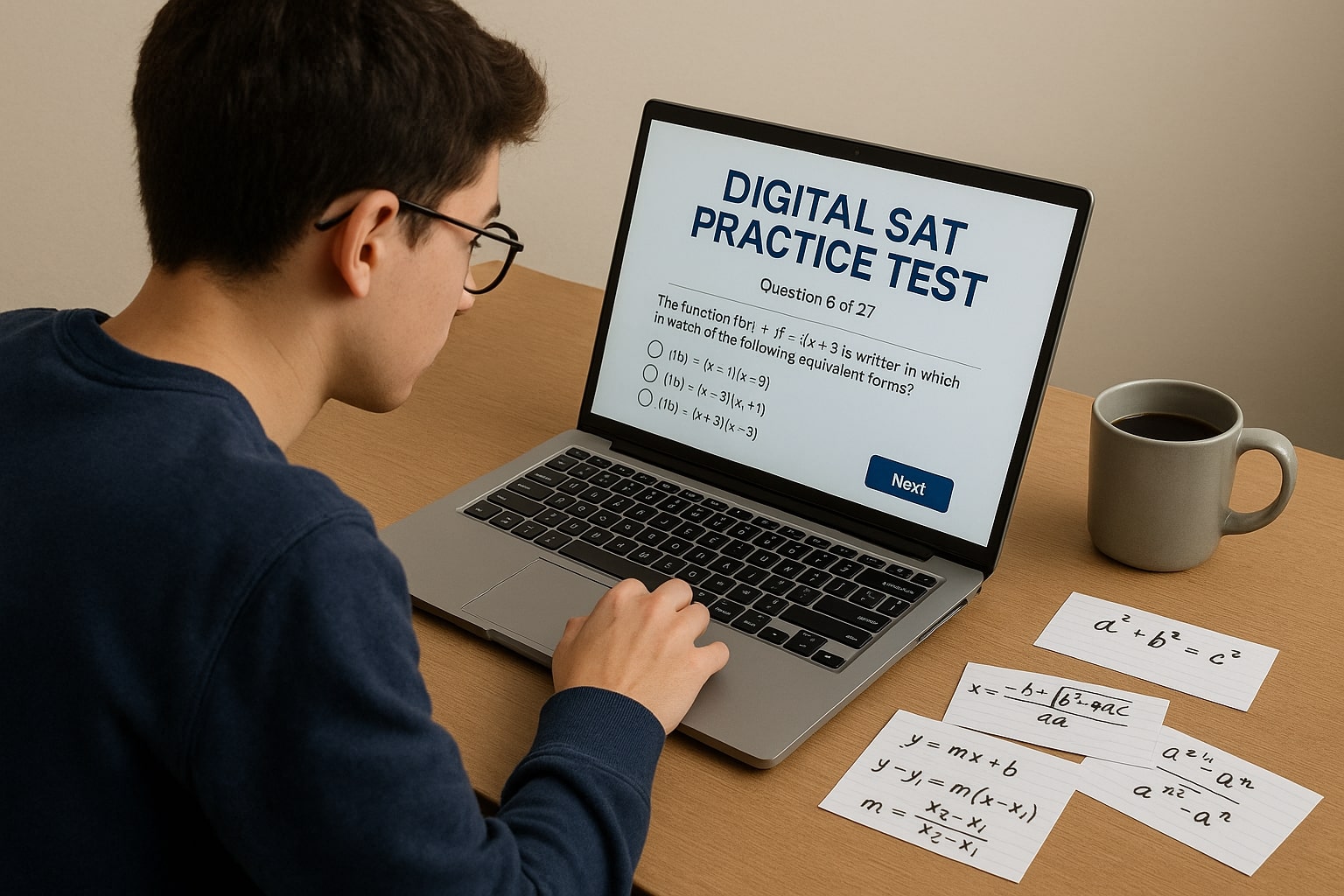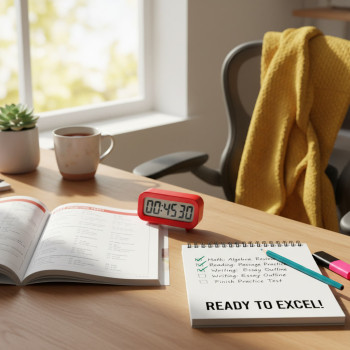The Student Advantage of Strong Memory in SAT Prep
Think about the last time you remembered exactly where you left your phone, recalled a poem line at the perfect moment, or pulled a math trick out of nowhere during homework. That feeling—calm, confident, quick—comes from something more than luck. It’s memory doing the heavy lifting. For the Digital SAT, where speed, accuracy, and adaptability matter, memory isn’t a bonus: it’s a competitive advantage.
Why memory matters on the Digital SAT (and not just for vocabulary)
The Digital SAT has changed how questions are delivered, but the core of the test still rewards the same student strengths: comprehension, reasoning, and efficient problem solving. Memory intersects with all of these in practical ways:
- Faster recall of math formulas and number facts saves time for harder problems.
- Retaining vocabulary and phrase meanings helps with reading passages and context clues.
- Remembering test strategies—like process-of-elimination steps, common trap types, and the adaptive behavior of the test—prevents avoidable mistakes.
- Stronger working memory improves multi-step reasoning, letting you hold intermediate results while you finish a problem.
Put simply: a student with a robust memory is more likely to convert knowledge into correct answers under timed conditions.
A quick reality check: memory is a skill, not a fixed trait
Many students assume memory is either something you have or don’t. That’s a myth. Memory is trainable. The techniques you use, how you space practice, and how you rest and recover have a huge impact. Think of memory training like strength training—consistent workouts produce measurable gains.
Memory in action: three realistic SAT scenarios
Scenario 1 — The math question with a familiar pattern
You’ve seen a variation of this algebra question in practice. Because you recognized the pattern and remembered the solving sequence, you finish in half the time. That quick victory leaves minutes to check a trickier reading passage. Recognition + recall = time won.
Scenario 2 — A dense passage with tricky vocabulary
A passage uses a word you encountered in flashcard practice last week. You don’t just know the definition; you remember how it’s used in context. Instead of pausing to decipher, you keep reading with comprehension, which preserves energy and momentum—both valuable on a timed, adaptive test.
Scenario 3 — Test strategy under pressure
Halfway through a section, the adaptive format changes the difficulty. You remember a strategy taught by your tutor—or a tip from a practice report—and apply it without hesitation. You avoid second-guessing and maintain accuracy. That steady approach often separates shaky attempts from strong scores.
Foundational memory techniques every SAT student should know
1) Spaced repetition: the backbone of long-term retention
Spaced repetition means returning to material at increasing intervals: same day, a few days later, a week later, then a month later. This timing takes advantage of how memory consolidates. For the SAT, build a simple spaced schedule for vocabulary, formulas, and problem types. Digital tools and physical index cards both work—what matters is consistency.
2) Active recall: force the brain to retrieve
Instead of re-reading a passage or solution, close your notes and recreate it from memory. Ask yourself: “How did I solve that geometry problem? What were the key steps?” Active recall strengthens retrieval pathways, so on test day your brain pulls the information quickly under stress.
3) Interleaving: mix topics to train flexible thinking
Rather than practicing ten algebra problems in a row, mix algebra, data interpretation, and grammar questions. Interleaving prepares your brain to switch contexts—exactly what the SAT asks you to do when a section mixes easy and hard items.
4) Dual coding: use words and visuals together
Combine verbal explanations with diagrams or sketches—especially in math. A quick sketch of a function, coordinate graph, or geometry figure anchored to a sentence helps memory by creating two pathways: visual and verbal.
5) Memory palaces and vivid associations (when things won’t stick)
For stubborn vocabulary or multi-step strategies, create imaginative links. Attach a ridiculous image or story to the concept. The sillier and more vivid, the better. Memory palaces—placing items along a familiar mental route—work great for ordered lists like test-day routines.
Putting techniques into a weekly SAT study plan
Below is a sample 6-week plan focused on memory-building for students with 8–12 hours per week to study. Customize it to your baseline and timeline.
| Week | Main Focus | Memory Techniques Used | Practice Example |
|---|---|---|---|
| Week 1 | Core content review (math formulas, high-frequency vocab) | Spaced repetition, active recall | Create 40 vocabulary cards; test 10/day; review formulas and recreate each from memory. |
| Week 2 | Problem-type recognition & timing | Interleaving, active recall | Mix 30 mixed problems/day; mark patterns and write solving steps from memory. |
| Week 3 | Passage comprehension and strategy | Dual coding, spaced repetition | Annotate passages visually; summarize each paragraph from memory. |
| Week 4 | Adaptive practice tests (Bluebook or official full-length) | Active recall, spaced review of mistakes | Take 1 digital practice test; review missed items with flashcards and write corrections from memory. |
| Week 5 | Targeted review (weak spots) | Spaced repetition, interleaving | Build micro-lessons for each weak area and review them every other day. |
| Week 6 | Test simulation and consolidation | Active recall, memory palace for test routine | Full test simulation, memorize test-day checklist with a palace, light review day before test. |
How to log progress
Keep a simple study journal: date, material covered, memory method used, time spent, and three takeaways. Over weeks you’ll see which tactics increased retention and how your timing improves.
Concrete exercises to strengthen SAT memory
Daily 20-minute memory workout
- 5 minutes: Quick flashcard review (active recall).
- 10 minutes: Mixed practice (interleaving) with immediate self-explanation of each answer.
- 5 minutes: Summarize one passage or problem solution aloud without looking (dual coding if you sketch a quick diagram).
Weekly deep-focus session (60–90 minutes)
- Warm-up: 10 minutes reviewing spaced-repetition queue.
- 40–60 minutes: Full section practice with timed passages or math sets.
- Wrap-up: 10–20 minutes of active recall—list mistakes and explain corrections from memory.
Memory drill examples
- Math formula scramble: list 6 formulas on a sheet, cover them after 60 seconds, and recreate them. Repeat until flawless.
- Vocabulary in context: write five sentences using target words, then rewrite from memory the next day.
- Step reconstruction: after solving a multi-step problem, reconstruct only the intermediate steps—no peeking—then compare.
Practical tips for test day memory performance
Before the test
- Sleep well: memory consolidation happens during sleep; avoid last‑minute cramming the night before.
- Light review only: a 20–30 minute active-recall session to prime key formulas and vocabulary is better than new learning.
- Pack a routine: the same morning routine (wake time, breakfast, warm-up practice) helps reduce cognitive load so memory retrieval is smoother.
During the test
- Use short notes: on the digital interface, jot quick labels, formulas, and reminders where allowed so you don’t overload working memory.
- Control your pace: if a question is stumping you, mark and move on—returning fresh often triggers retrieval more easily.
- Apply recognition as a cue: sometimes a single word or figure will trigger the whole method you practiced—trust the cue and begin the recall process.
How technology and tutoring can boost memory gains
Digital practice platforms and personalized tutoring accelerate memory training by creating targeted repetition and immediate feedback. Adaptive practice surfaces the exact question types you struggle with so spaced repetition focuses where it matters most. Live tutors help by explaining errors verbally and modeling active-recall techniques—two things that anchor memory more deeply than solo study.
For students who want an organized, human-guided approach, Sparkl’s personalized tutoring blends 1-on-1 guidance, tailored study plans, expert tutors, and AI-driven insights to pinpoint memory gaps and build a recovery plan. Tutors can introduce memory palaces, supervise spaced schedules, and create practice paths that build recall confidence. When learning becomes personalized, memory practice shifts from random drills to meaningful, retained knowledge.
Example: How a tutor transforms a weak spot into a strength
Imagine a student who constantly forgets the difference between similar grammar rules on the Writing section. A tutor first diagnoses the specific confusion, then creates micro-lessons: brief explanations, controlled practice, and a spaced-repetition queue. They might role-play correction scenarios and ask the student to teach back the rule—an active-recall technique that cements memory. After several cycles, what once needed constant prompting becomes automatic.
Measuring improvements: what to track and why it matters
Improvement looks different for every student. Instead of obsessing over raw score jumps each week, focus on these measurable signals of better memory:
- Decrease in time spent retrieving formulas or methods during practice.
- Fewer repeat mistakes on the same concept across sessions.
- Increased number of question types answered without consulting notes.
- Better stamina—consistent performance across a full practice test.

Simple tracking table
| Metric | How to Measure | Goal (4 weeks) |
|---|---|---|
| Recall time for formulas | Time to write/recreate formula during warm-up | Reduce by 50% |
| Repeat error rate | Count of same-concept mistakes per week | Zero repeat errors on targeted concepts |
| Vocabulary recognition | Correct in-context usage on quizzes | 80–90% accuracy |
| Confidence under timed practice | Self-rating 1–5 after sections | Average of 4+ |
Common pitfalls and how to avoid them
Pitfall 1: Rereading without retrieval
Why it fails: re-reading feels productive but creates an illusion of mastery. Fix: switch to closed-book recall and self-testing.
Pitfall 2: Cramming vocabulary the night before
Why it fails: cramming floods short-term memory without consolidation. Fix: use spaced repetition weeks in advance and a tiny pre-test day refresher.
Pitfall 3: Practicing only one question type
Why it fails: real SAT sections mix topics and switch contexts. Fix: interleave practice and simulate the adaptive feel of the test with mixed sets.
Real students, real wins: short stories
Maria kept mixing up transformation rules in coordinate geometry. After switching to nightly 10‑minute formula scrambles and a memory palace for procedural steps, she began recognizing patterns faster on practice tests and built the confidence to attempt more difficult items.
Jason dreaded the Reading section because his mind wandered. He started a two-week program of short, active-recall paragraph summaries and learned to annotate passages with one-word anchors. His comprehension and speed improved, and he stopped losing points to avoidable mistakes.
Both students used personalized guidance—tutors who designed the drills and tracked spacing. That human feedback turned repetitive practice into meaningful memory work, helping them convert effort into score gains.
Final checklist: a memory-ready SAT routine
- Start spaced repetition for vocabulary and formulas at least 6–8 weeks before test day.
- Use active recall every study session—test before reviewing notes.
- Mix subjects in every practice set (interleaving).
- Create quick visual anchors for complex steps or multi-stage methods.
- Simulate digital test sessions to pair memory with the format (practice on Bluebook or official digital previews if available).
- Work with a tutor when possible to get personalized schedules and feedback—Sparkl’s 1‑on‑1 guidance and AI-driven insights are examples of how tailored help can accelerate memory gains.
- Sleep, hydrate, and keep stress in check—biological health supports memory consolidation.
Parting thought: memory gives you more than answers
Memory isn’t just about recalling facts; it’s about confidence, calm, and the freedom to think clearly under pressure. When a formula comes to you without panic or a vocabulary clue opens a passage like a door instead of a puzzle, your whole test day experience shifts. The Digital SAT rewards students who can combine knowledge with speed and adaptability—and a strong memory is the bridge between what you know and what you can do on test day.
If you’re ready to build memory the smart way, start small, stay consistent, and don’t hesitate to get personalized support. The right plan—tailored practice, spaced review, and occasional expert guidance—can turn memory from a stumbling block into a superpower.
Now take one small step
Pick one memory technique from this article and use it today: make five flashcards, sketch a formula from memory, or mix a short interleaved practice set. Small, steady steps add up. Your future self—calmer, faster, and more confident on test day—will thank you.
Good luck, and study smart.

















No Comments
Leave a comment Cancel